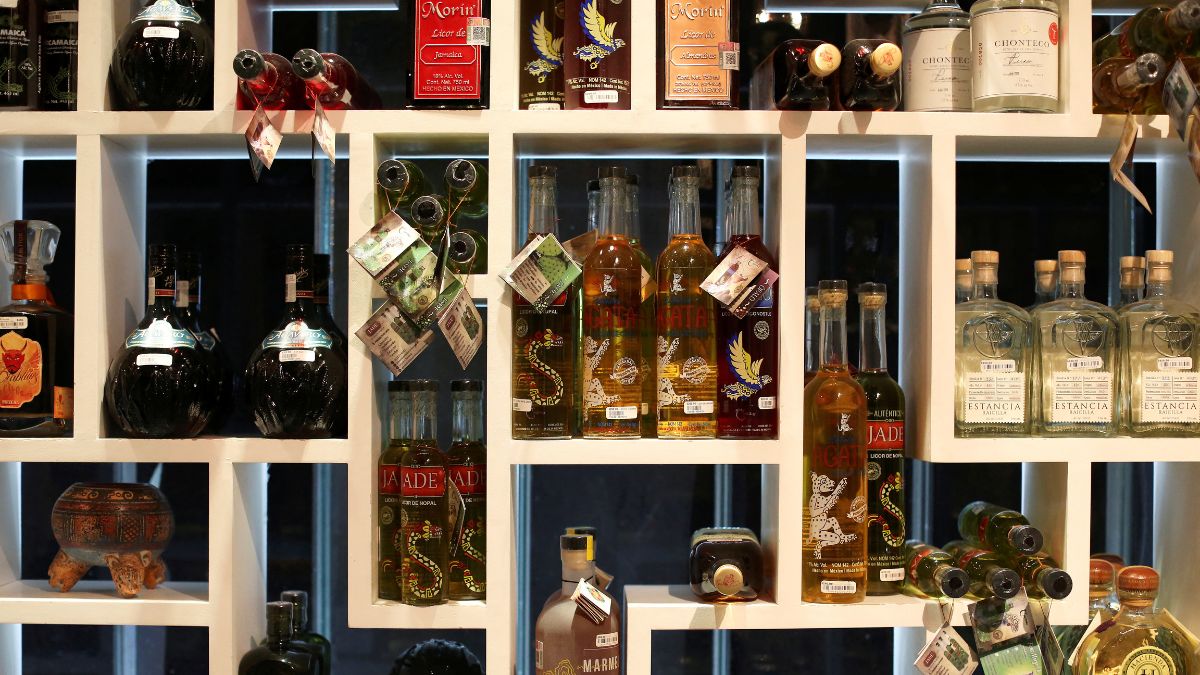Mexico’s tequila industry is facing an unprecedented challenge. Over 525 million litres of surplus tequila are currently in inventory, almost matching the nation’s annual production.
According to the Tequila Regulatory Council (CRT), one-sixth of the 599 million litres produced in 2023 remained unsold. This excess has created significant economic and logistical challenges for producers and the broader agave farming community.
Reported by The Financial Times, the surplus is divided into two main categories: tequila ageing in barrels for premium blends and ready-to-bottle stock.
Both categories contribute to the staggering volume that producers are struggling to manage. Trevor Stirling, an analyst at Bernstein, pinpoints the core of the problem: “Much more new spirit is being distilled than is being sold, and inventories are starting to accumulate.”
Is this end of the tequila boom?
The surplus has coincided with a decline in US demand, tequila’s largest export market. Consumption in the United States fell by 1.1 per cent in 2024, a stark contrast to the growth observed in the previous years.
During the pandemic, tequila enjoyed an explosive rise in popularity, with premium brands and celebrity endorsements dominating the market. From George Clooney’s Casamigos to Kendall Jenner’s 818 Tequila, these high-profile names propelled tequila to the forefront of the global spirits market.
However, changing consumer habits have dampened the momentum. Faced with inflation and rising costs, consumers are gravitating toward more affordable spirits, reducing demand for premium tequila. The shift is particularly significant for Mexico’s distillers, as the premium category accounted for much of the recent growth.
What about the producers?
The ripple effects of the tequila glut are being felt across Mexico’s economy, particularly among agave farmers.
Agave prices have plummeted, dropping from 30 pesos per kilogrammes to as low as 2 pesos on the spot market. This dramatic decline is threatening the livelihood of small-scale farmers who depend on steady prices to sustain their operations.
FT quoted Ramón González, president of the CRT, who warns that the imbalance between supply and demand could have lasting repercussions: “There is oversupply at the moment of several times what the industry needs,” he said.
For larger producers such as Bacardi (Patrón) and Diageo (Casamigos), the falling agave prices offer a cost advantage. Yet, the oversupply has also sparked fierce price competition among premium brands, with some resorting to steep discounts to retain market share. This strategy, while effective in the short term, raises concerns about long-term profitability and brand equity.
The tequila surplus also poses environmental concerns. Producing tequila requires a significant amount of water and energy, and excess production exacerbates waste.
Agave cultivation is land-intensive, and the disposal of unused agave or surplus tequila presents ecological challenges. Without sustainable practices, the industry risks long-term harm to Mexico’s environment and its reputation as a steward of agave farming traditions.
How do Trump and his US tariffs come into this?
Compounding the tequila industry’s woes is the potential reimposition of US tariffs on Mexican goods. A 25 per cent tariff, proposed by US President-elect President Donald Trump, remains a looming threat.
With 80 per cent of Mexico’s tequila exports destined for the US, the introduction of such tariffs would be a significant blow.
González remains cautiously optimistic, citing historical precedent: “When he was president…he said exactly the same thing, that there would be tariffs, et cetera. Not only did he not put taxes on alcoholic drinks, he lowered them.”
While tariffs have not yet materialised, the possibility continues to create uncertainty in the market. Analysts warn that if implemented, the tariffs would likely result in higher retail prices in the US, which could further dampen demand and exacerbate the surplus.
Can Mexico export elsewhere?
While tequila has gained popularity globally, its dependence on the US market is stark. Exports to the US account for over 80 per cent of Mexico’s total tequila exports.
In contrast, other major markets like Spain and Germany account for just 2 per cent each, despite a 207 per cent increase in global exports over the past decade.
Expanding into these secondary markets presents its own challenges. Tequila faces stiff competition from local spirits and consumer preferences, which vary significantly across regions.
Additionally, premium tequila brands, which rely on their distinctive quality and heritage, must navigate price sensitivity in these emerging markets.
What is the solution?
Diversifying export markets and expanding tequila’s appeal in Asia, Africa, and South America could reduce reliance on the US Innovations in production and packaging, such as smaller bottles or ready-to-drink cocktails, could also capture new consumer segments.
Producers are also exploring partnerships with craft distilleries and boutique labels to elevate tequila’s status globally. Education campaigns that highlight tequila’s artisanal qualities and its versatility as a spirit could help combat misconceptions and broaden its appeal.
Transparency in pricing, sustainable farming practices, and robust trade policies will play pivotal roles in securing the industry’s future.
With careful management, this iconic Mexican spirit can overcome its current obstacles and continue to thrive on the world stage.
Also Watch:
With inputs from agencies
)